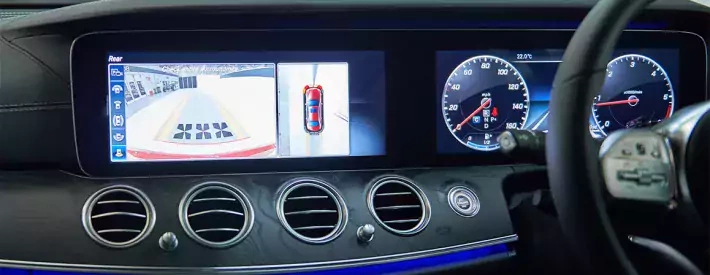How Thatcham is simplifying ADAS repairs

In this article: Advanced Driver Assistance Systems are now integrated on 4.5 million vehicles, making sure repair standards are in place if things go wrong is crucial to that number growing
The number of vehicles that benefit from Advanced Driver Assistance Systems (ADAS) is growing and that’s putting pressure on the industry to improve the way it works.
The number of ADAS-enabled vehicles on UK roads has reached 4.5 million, a figure set to grow exponentially as carmakers increasingly fit the latest driver assistance technology to new models.
Making sure any vehicle that includes the technologies and is involved in an accident is repaired properly is paramount, if they aren’t it could harm the long-term sustainability of ADAS-equipped vehicles.
That’s why requirements have been established to bring clarity to the safe repair of vehicles with ADAS systems and Thatcham Research, on behalf of its insurer members, has released a set of Insurance Industry Requirements (IIR) for the safe repair of ADAS-equipped vehicles.
Richard Billyeald, Chief Technical Officer at Thatcham Research said: “The correct procedures for the safe repair of vehicles with ADAS, and in what scenarios calibration of the systems themselves is required, has been a long-standing challenge to the automotive repair industry. Sensor calibration requirements vary greatly from one vehicle to another. But no matter what model is being fixed, it’s essential that manufacturers’ technical specifications are met to reinstate ADAS features safely, without compromising performance.”
The IIR should bring clarity to repairers and enable the long-term sustainability of ADAS-equipped vehicles.
The IIR: the detail
The IIR confirms that inspection, realignment and calibration requirements must be considered in all situations where any of the following is included within the repair, service or maintenance procedure:
- ADAS sensors
- Parts likely to affect the operation and functionality of ADAS sensors, or
- Vehicle geometry
The requirements establish the key steps repairers must follow to ensure that ADAS continue to function as they did pre-accident, including:
- Identifying the presence, or not, of ADAS on the vehicle and ensuring this is recorded
- Completing all relevant inspection, realignment and calibration activities as detailed within the repair procedures
- Ensuring that calibration results confirm that the sensors are functioning within the vehicle manufacturer’s technical specification
In addition, repair procedures should clearly identify if inspection, realignment and calibration are required and why. As well as this, repairs must be carried out by a currently competent person and fully verifiable and auditable records should be produced, with a copy provided to the Asset Owner or Work Provider.




